LM105 - How Tough Is It?
The main thing that has really impressed us with our home-made LM105 handle material is how unbelievably tough it is. Does it need to be this tough? No. No knife is going to be subjected to the abuse we put this through but we wanted to see just how tough it really is.
The main thing we are doing differently from most makers is that we did a lot of research on resins. Many people use Bondo or polyester resins found at Home Depot type stores and apparently it works just fine. We decided to use West Systems 105 epoxy resin and 206 slow hardener. This is the stuff they use to build yachts so we figured it had to be tough and waterproof. It is very expensive at a little over $52 per quart and well over $100 for a gallon but it is reported to be the best so we went with it.
Just for clarification, this type of handle material is often referred to as Micarta. Although we make our LM105 handle material using similar methods, Micarta is a trademark of Norplex-Micarta industrial high pressure laminates and refers to a composite of linen, canvas, paper, fiberglass, carbon fiber or other fabric in a thermosetting plastic, originally used in electrical and decorative applications. Micarta(R) was developed by George Westinghouse at least as early as 1910 using phenolic resins invented by Dr. Leo Baekeland.
Our handle material is a laminated material (LM) made with West Systems 105 epoxy resin and variety of fabrics. Thus the name LM105.
In our first foray into making LM105, we made this piece of twisted black and gray canvas.

Which became this knife handle...

We knew this stuff was beautiful but we wanted to know how tough it was. We cut off a sample piece from the end to test. Bear in mind that this end piece was probably not as saturated and solid as a middle piece would be since it was extruding out of the vise we used to press it.

After it had cured for a few days, Cliff beat on it with a ball peen hammer until the piece was hot to touch, a good 20-30 hard licks, and hardly made a mark on it. Wow! We were impressed but now we were curious as to just how tough this stuff really was.
So, Cliff ran it through the dishwasher and beat on it some more. No damage.
OK. We wondered if some solvent might break it down so we soaked in WD-40 for 5 days and then beat on it some more. Another 20-30 hard licks with a 20 oz. ball peen hammer and no damage.
Now we are really impressed. Let's try some gun cleaning solvent. Something has to affect this stuff. We gave it a good soaking and beat on it some more. No damage.
Maybe carburetor cleaner will get to it! Soaked for 24 hours. Beat on it. No damage.
Freezing! Put it in the freezer for a couple of days and beat on it while frozen. No damage.
Dayum! Now this is getting to be a challenge. What other abuse might a knife encounter? Sun and heat! Cliff tossed the piece on the dashboard of his work truck and left it in the sun and 80-90 degree heat (probably much hotter inside the truck) for 2 weeks.
After all of this, our sample is still solidly in one piece and looks great.
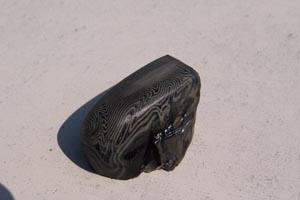

We beat on it some more....
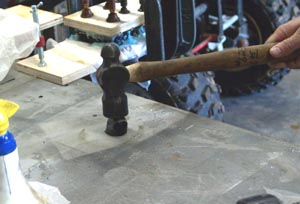 ....no damage...
....no damage...
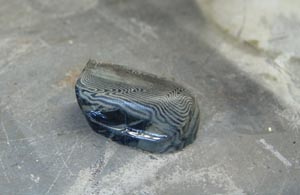
We couldn't make more than a scuff mark on it with good strong hammer licks.
OK, lets get a bigger hammer. We went to the 2 lb sledge and whacked it several really hard licks
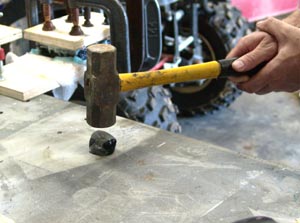
and didn't make a dent in it.
Bigger Hammer! Now this was a matter of us or the LM105. We got out the 8 pound sledge hammer and started wailing away on it.
 Are you kidding me?
Are you kidding me?
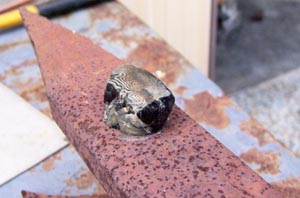
Let's move this thing out in the lot where we can really swing at it.

After about 6 or 8 full swings we finally saw a crack. It was finally starting to give!
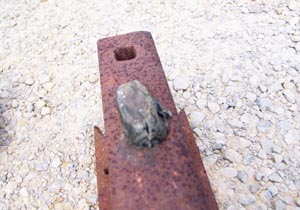
A couple more full over head swings with the 8 pound sledge and the piece finally split.

This piece of LM105 had endured hundreds of hard hammer blows, been frozen, heated, and attacked with every kind of chemical solvent we had in the shop over a period of several weeks. If finally took really smashing on it with an 8 pound sledge hammer to do it in and even then it took several tries before it finally gave it up. We were flabbergasted as to how tough this stuff is.
Now we were wondering if micarta is inherently this tough or if it was something special about our LM105. I know it is impossible to compare apples to apple since many different resins and fabrics may be used in various pieces of micarta but just for giggles we grabbed a scrap of some micarta we had purchased from a commercial dealer.
We used our medium sized hammer and gave it a couple medium hard licks. It cracked on the 2nd blow and split in two with the 3rd blow, against the grain.
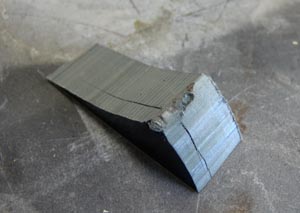
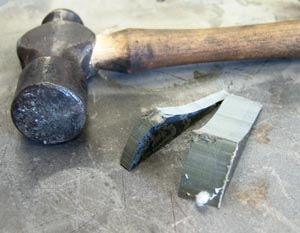
So, we are quite convinced that we have a handle material as tough as our blades. This stuff is going to take any abuse a knife might normally see in it's lifetime without flinching. The West Systems resin is expensive and making the handle material is a time consuming two-man process but we are convinced that it is worth the time and expense when you want a handle material that is about as bulletproof as you can get. Bullets? Hmmm....... (to be continued).
April 2010
We weren't kidding. We took a piece we cut off from the other end of the twist and decided to use it for a little target practice.

Cliff started with some .38 specials
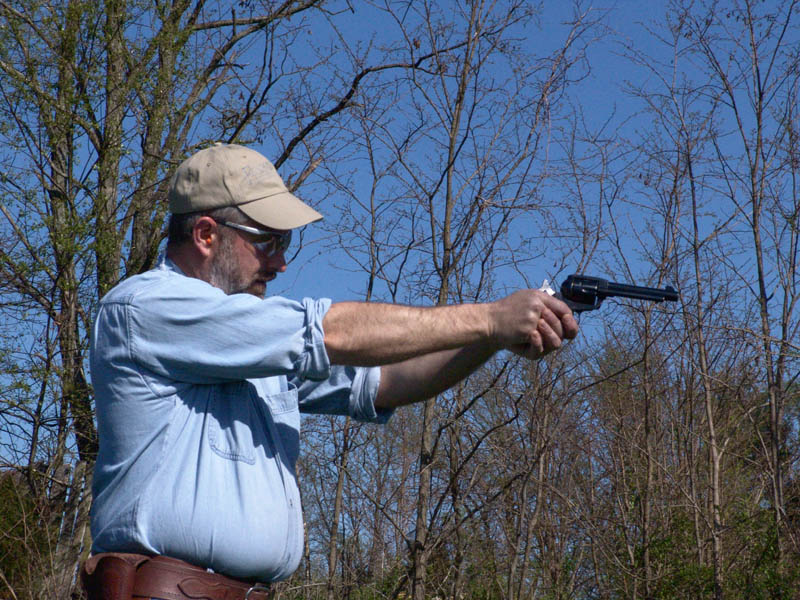
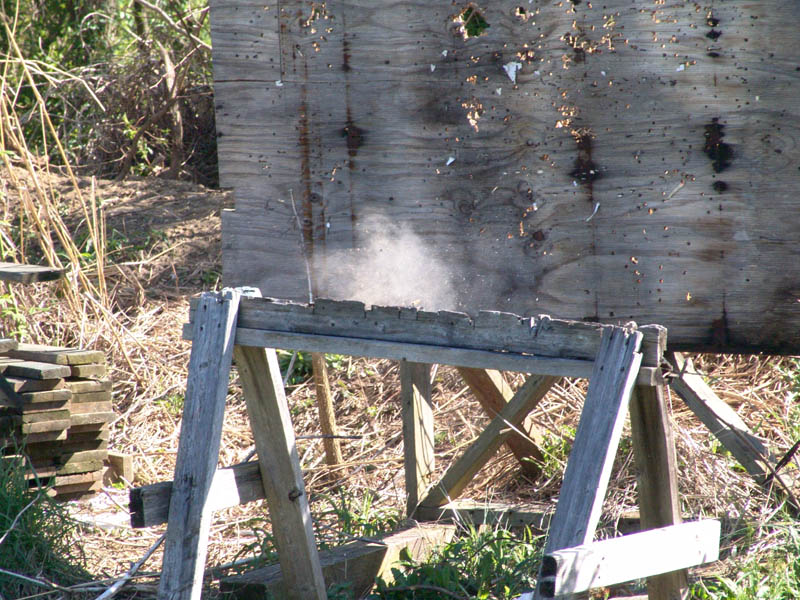
This one just grazed it

We try again
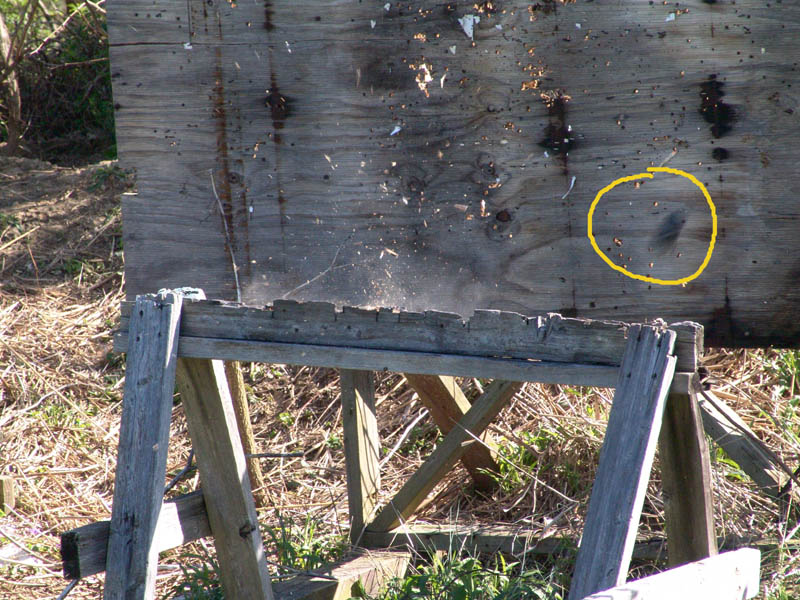
This one wasn't dead center but it was a good solid hit. It did some damage but really that much, only penetrating about 5 or 6 layers.
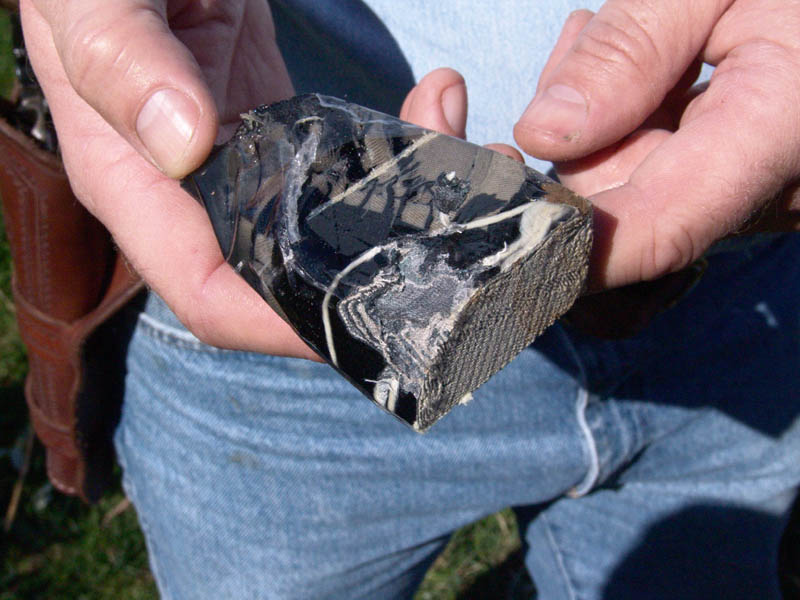
Now it's time to get serious.

Cliff takes aim with a hot load .44 magnum
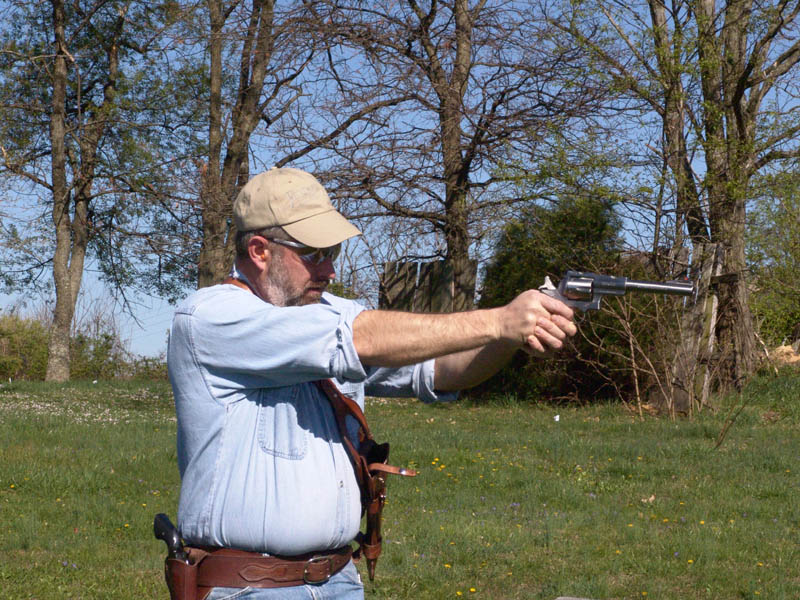
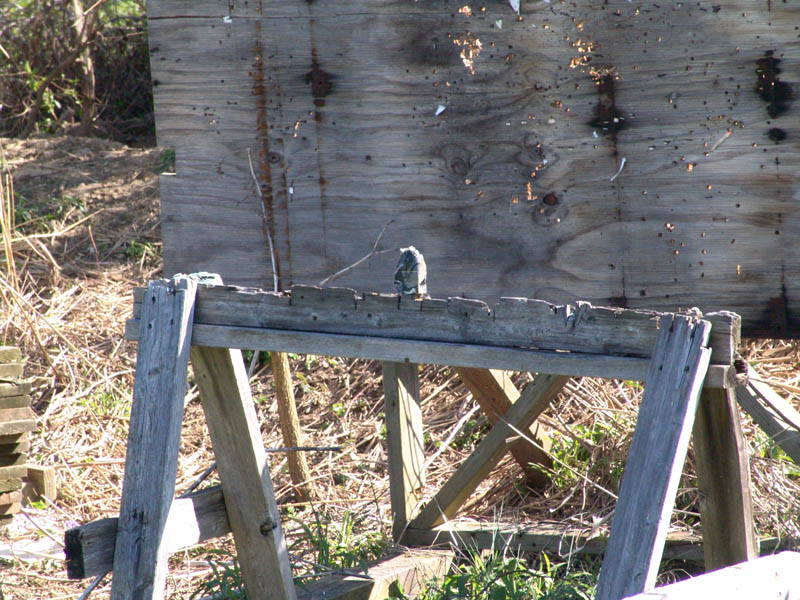
And nails it
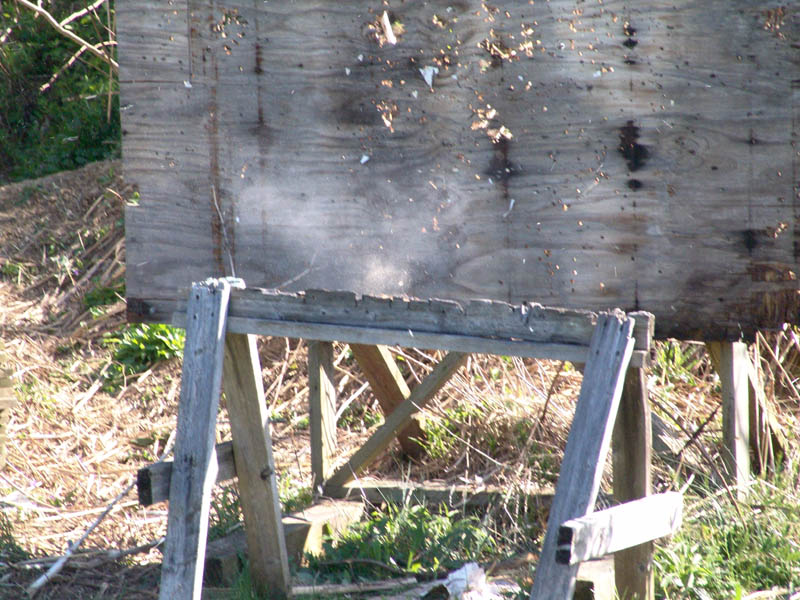
We finally found the limit

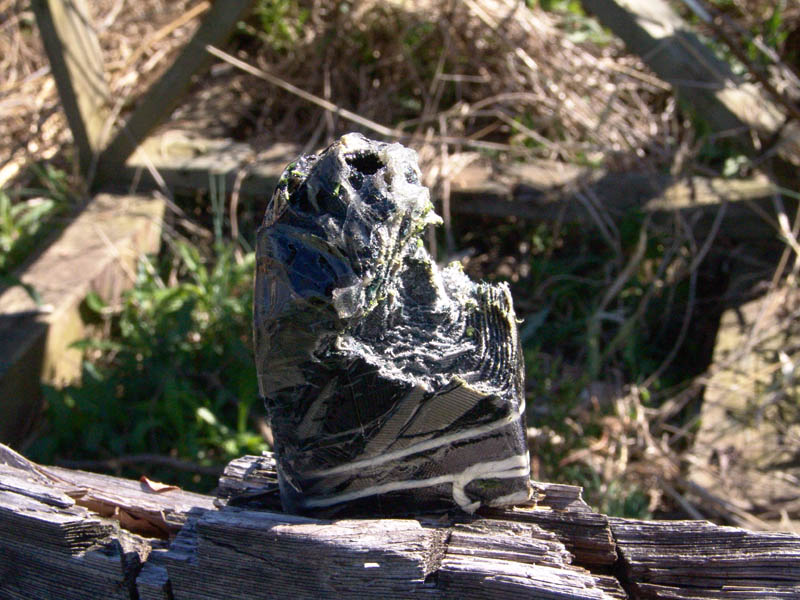
Our conclusion: This stuff is TOUGH! You could even say bullet proof if you happen to be shooting your knife with .38 caliber or smaller. No kidding, this stuff has amazed us. Nobody is going put any knife through the torture tests we did. A knife with our LM105 handle material is going to stand up to just about anything you could throw at it.